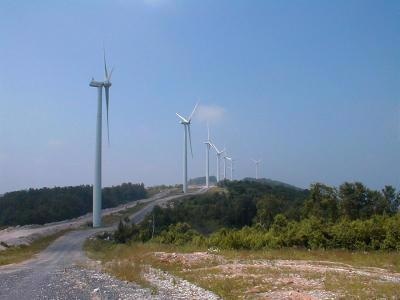The development of wind energy is accelerating around the world in an effort to reduce greenhouse gas emissions and slow climate change.

Image Credit: University of Maryland.
But locations that are perfect to harvest wind energy frequently tend to overlap with wildlife concentrations, possibly resulting in the loss of habitats and collisions. Scientists have discovered that data gathered by weather radar networks can be utilized to diminish collisions and minimize habitat-related effects of wind turbines on nocturnally migrating birds.
As the development of wind energy expands worldwide, information to minimize impacts of this development on biodiversity is urgently needed.
Emily Cohen, Study Lead Author and Assistant Professor, Center for Environmental Science, University of Maryland
Cohen added, “Networked radar data are available across the United States and other countries, and broad application could provide information critical to the bird-friendly expansion of this globally important energy source.”
Billions of birds tend to easily migrate seasonally via North America, with the majority of them flying at night and stopping during the day to rest and refuel. This is done frequently in places with a high potential for wind energy.
Migrating birds are at risk as they travel across lower altitudes that are swept by wind turbine blades, called the rotor-swept zone. This happens while descending to and ascending from the stopover habitat.
Measures have been taken to prevent and reduce bird collisions and habitat-related effects at wind facilities. This is inclusive of siting facilities to avoid high-risk areas, temporarily closing turbines when target species are noted in the vicinity, and aurally and visually deterring birds from the facilities nearby.
All of these management approaches would benefit from a more well-defined knowledge of where and when large numbers of nocturnally migrating birds will pass through the rotor-swept zone and descend to stopover sites during migration.
Jeffrey Buler, Study Co-Author and Associate Professor, Wildlife Ecology, University of Delaware
With constant analysis of data gathered over a period of four years by seven radars throughout the North American Great Lakes — a significant bird migration corridor — scientists found that weather radar can help determine areas where huge numbers of migrating birds tend to fly via the rotor-swept zone and stopover in high densities.
The researchers determined a 20-km distance from shorelines where the high focus is given to migrating birds and a threshold that can be beneficial for directing the placement of new wind energy development and for determining peak lift-off and landing times that turbine operation could be curtailed.
For instance, even though nocturnally migrating birds frequently fly well above altitudes sectioned by wind turbines, scientists discovered that the proportion of birds in the rotor-swept zone peaked at almost 50% near sunrise while birds migrating via the Great Lakes region were concluding nocturnal migration by landing in terrestrial stopover habitats.
But exposure risk could be reduced by preventing the placement of turbines in regions with the highest stopover concentrations or reducing turbine operation during twilight hours. Particularly, this can be done during the small fraction of nights at the time of migration passage.
By quantifying spatiotemporal patterns of aerial and terrestrial habitat use, it is possible to provide an exposure risk evaluation that can help guide future wind energy growth and operation to minimize negative impacts to nocturnally migrating birds from turbine collision and habitat loss.
Emily Cohen, Study Lead Author and Assistant Professor, Center for Environmental Science, University of Maryland
The US Fish and Wildlife Service, in collaboration with the Upper Mississippi River and Great Lakes Joint Venture, NASA, and the USDA, made this research possible.
Journal Reference:
Cohen, E. B., et al. (2022) Using weather radar to help minimize wind energy impacts on nocturnally migrating birds. Conservation Letters. doi.org/10.1111/conl.12887.